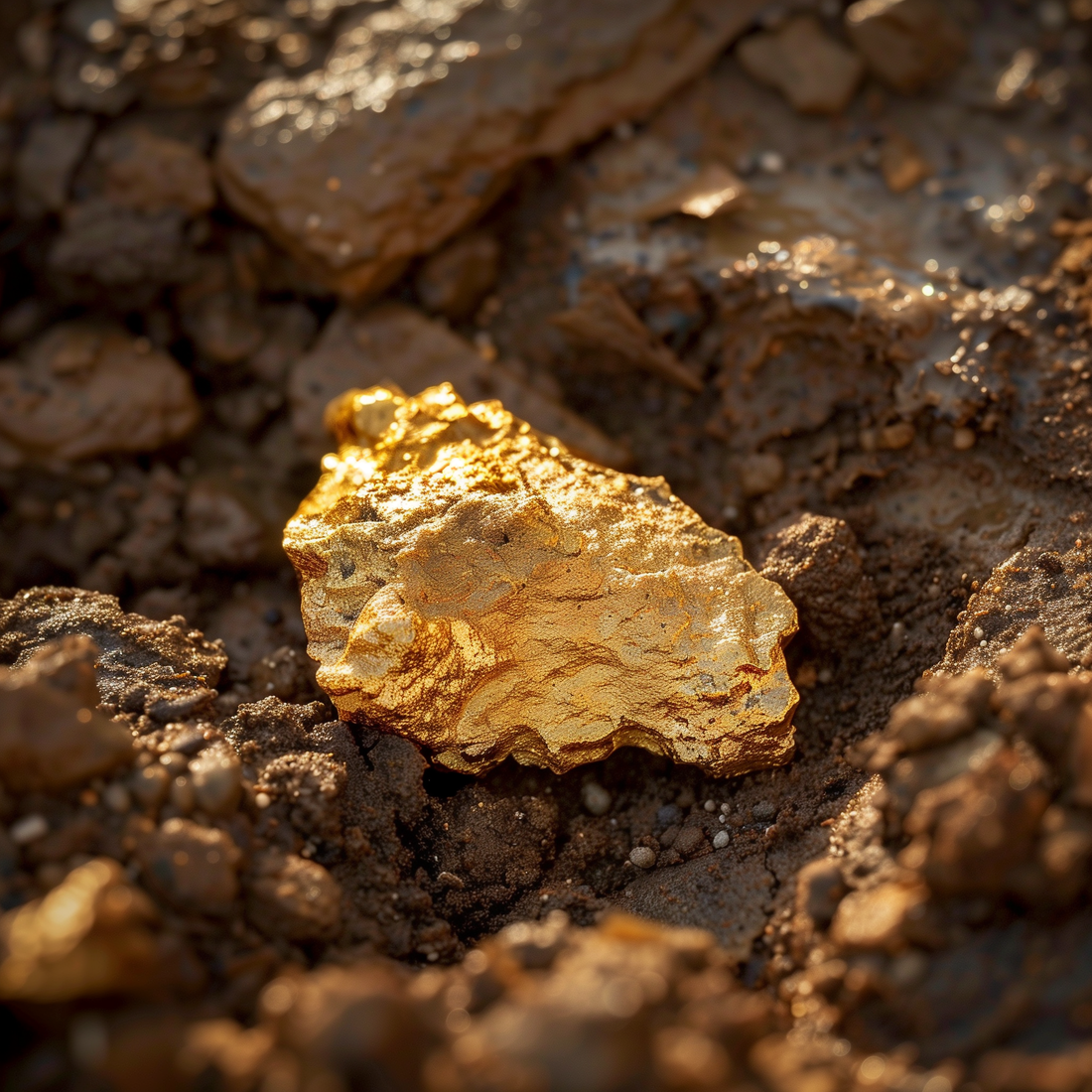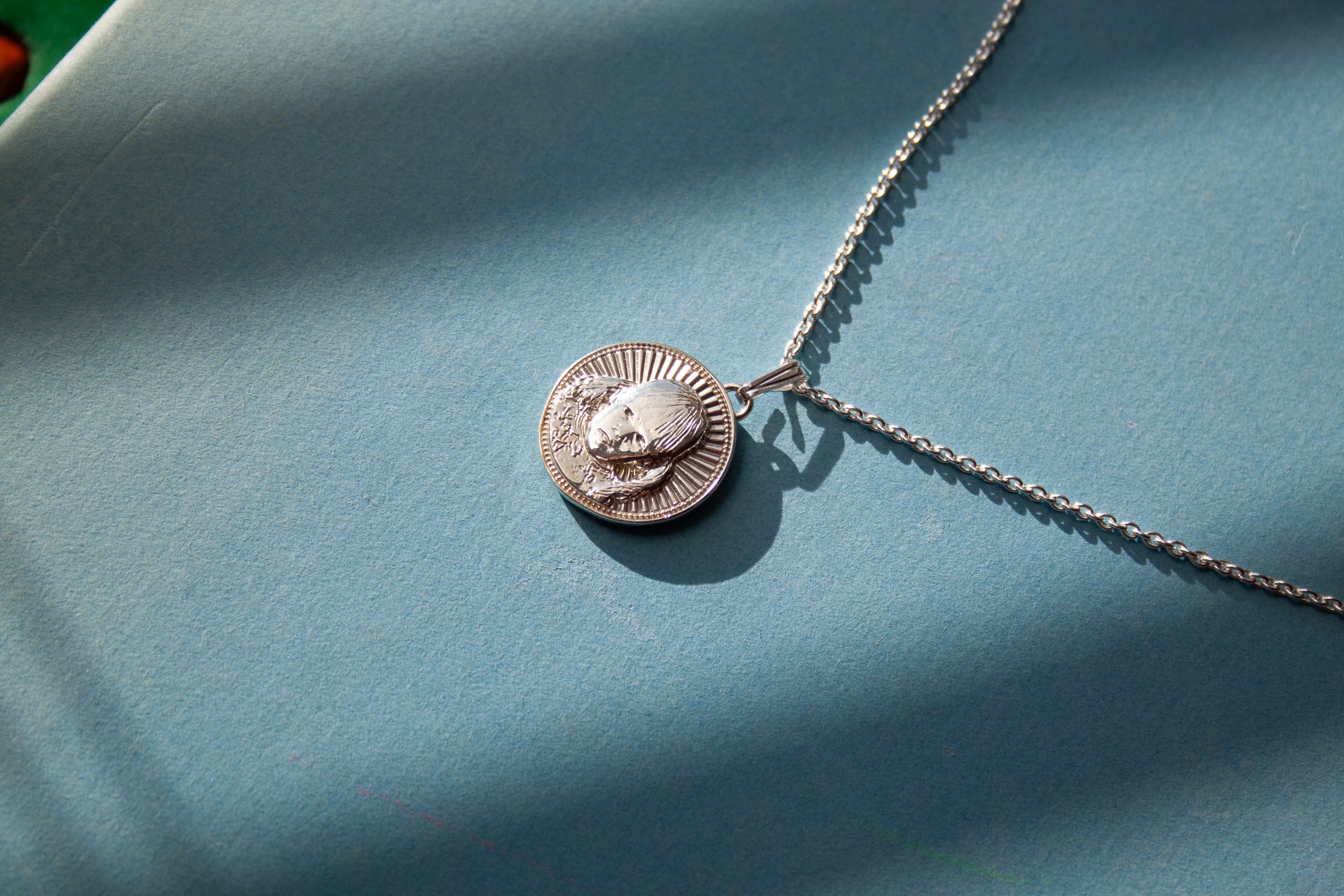The process of making jewelry requires heat, chemicals, and raw materials. There is no way around that, and most brands gloss over these facts and cuddles their customers with feel-good paragraphs about responsibility to convince them of a quick purchase. Yes, brands can adopt certain measures to minimize their harm to the environment (see below), but let's talk about the real solution first:
Don't Buy This Jewelry
Patagonia said it best: The least polluting jewelry is the jewelry that is never made. The second best is vintage: the polution has already happened, and the environment has already paid the price. Purchasing it a second time doesn't do more damage.
Unfortunately we live in times where fast fashion is a multibillion dollar industry whose entire premise is to pump out cheap pieces that neither the companies, nor the consumer expects to last very long. When that $40 dollar "gold" ring you bought last summer begins to tarnish, you'll be annoyed but you'll shrug and tell yourself that's what you can expect from ZarSheiHM, or one of the infinite Instagram based smaller brands. And then you'll look for a new one, or just have a rotation of 5-10 rings that constantly get's changed out depending on trends, and how old they are. This isn't foreign for any of us 21st century consumers.
There is a better way, but it does require sacrifices: you won't be on the latest fad or trend, and will have to pay more.
This is good: fads go away, and trends change. Considering the above paragraphs, the two most important things are: longevity, and interest. Longevity represents the life time of the pieces in normal use. Simply put: wear and tear. Some techniques such as plating (see our materials guide), lasts only for a few years. Unless they are used in stacks (a current fad/trend), then it could even be less, because of the metal clinking against metal. Vermeil will last considerably longer, but will also wear through over time. That could be 10-30, or even 40 years, but eventually they'll also be worn through. It is possible to get pieces re-plated at a goldsmith, which is actually a great option from an environmental perspective. The best option from a longevity perspective is to only buy solid silver or solid gold. They will never wear through, but they might need a good polishing now and then. Scratches and dents that happen naturally with use can either be viewed as beautiful testaments to the life of the piece, or can be fixed at a goldsmith depending on the item.
Losing interest in pieces over time is responsible for even more pollution. Just think about the huge piles of fashion we have amassed, that will likely never be worn again. The solution here is simple:
Buy with your whole heart not just for the next selfie. Buy deeply personal pieces, pieces that tell your story.
Ask yourself "does this piece mean something special to me", "will I wear this, when I am a different person in 5 years? In 10? 20?"
Living sustainably requires sacrifices, and we commend you if you are one of those that do.
Ore, Smelting & Child Labor
Precious metals jewelry are made from ore that naturally occur in our environment. Ore is rocks containing minerals with precious metal concentrations that are higher than normal, thus making it feasible to extract and refine it. Ore is mined from the earth by either excavation or blasting. It's then crushed and loaded up into carts, conveyer belts, and trucks and transported to a factory.
The extracted ore which is in a powder form at this point, is further crushed into exact particle sizes using large industrial mills. The powder is mixed with chemicals and dissolved in water. The solution is then pumped through a series of froth-floatation cells, that creates foam using either oxygen or nitrogen. This foam contains the target metal and is scraped off from the top of the floatation cells.
Finally it is melted in furnaces at very high temperatures to further separate purify them. All this digging, blasting, washing, driving, and smelting emits lots of toxic waste, CO2, and other harmful components to our environment.
In many places in the world, conditions for the miners are terrible, and many people lose their lives every year in unsafe mines. Add to this that many children also work under these conditions. Usually these practices happen in places with weak worker protections, and unstable governments so there is no easy way to end or control for this. There isn't just a police station you can call and tell them about the children or unsafe conditions: they already know.
In addition precious metals are fungible, meaning it's impossible to tell the origin of a piece of refined gold, unless someone wrote it on it. If you have a legit mine with no children and good safety, it's easy to mix in "dirty" gold from questionable sources.
Gold and Silversmiths
Jewelry is made from refined gold and silver by highly skilled bench workers. But the workshop is also full of machines, tools, and chemicals that are necessary to shape the metals into elegant jewelry pieces. The machines pollute on a life-cycle basis, while different consumables such as pickle juice (acid), gases for mini torches, and polishing compounds such as rouge, are essential parts of the process.
Talk Is Cheap, Action Is Gold
What we do to decrease our harm to the environment and people around the World:
The feel-good minimums:
- Metals are sourced from refineries in Germany. The refineries have to answer for the exact source for every gram of gold they produce, and 99% of it is recycled, with traceability. This solves some of the ethical challenges of e.g. child labor, and cuts down siginificantly on the amount or new gold extracted from the earth.
- Bench workers are all located in the EU, ensuring labor laws, and safety are respected.
- Eco friendly packaging.
- Biking for local transportation.
- Taxes paid in the EU.
Plus:
- Our mission is to make deeply personal pieces that you will love for decades to come, thus breaking the throw-away consumer cycle.
- We do not offer simple plated jewelry, only solid and vermeil, to ensure the pieces last many, many years.
We acknowledge that jewelry production harms the environment, and are not blind to this. We continue to monitor the developments in this space such as the first prototypes of "low carbon/CO2" furnaces or the cyanide alternatives of ionometallurgy. Let us know if you know of other developments in this space you think we should know about!


